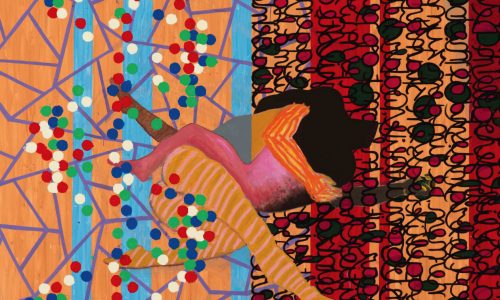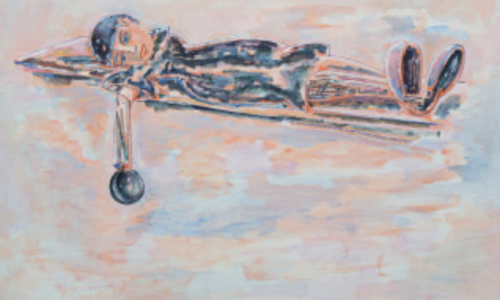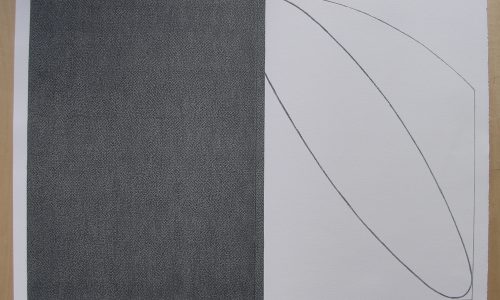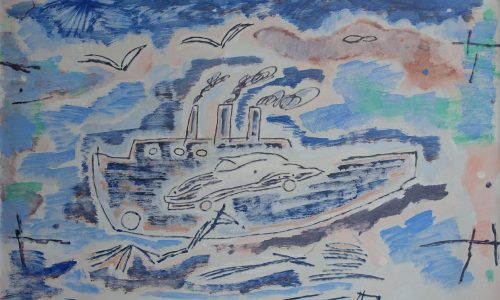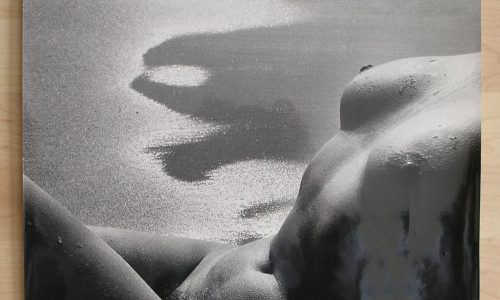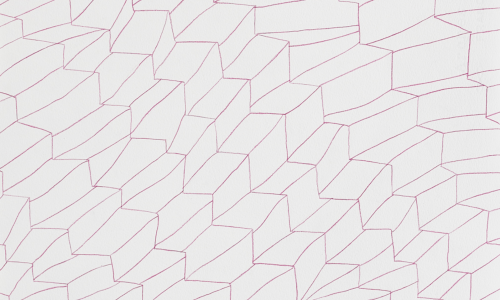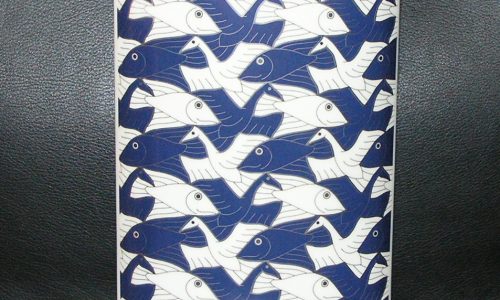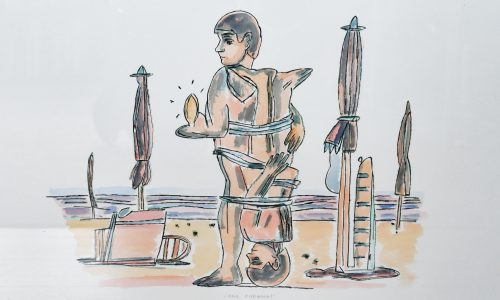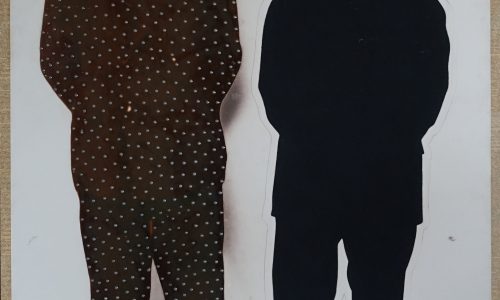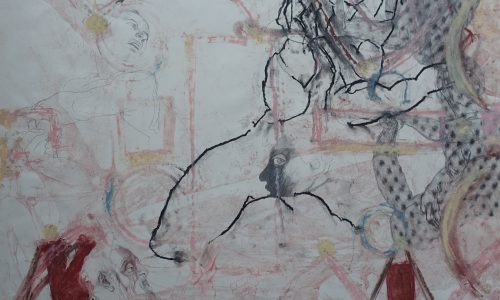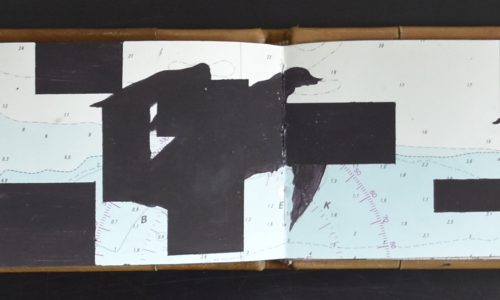Punk, Underground/Metro, music, resistance, grafiti, painting, street art.-
All these words are related to the artist Kriki who made a name for himself in the Paris art scene in the mid Eighties.
In 1984, in Paris, Kriki founds a group of painters called Nuklé-Art and the electro punk group Les Envahisseurs. With the street and the Underground as his art school, he is involved in the beginnings of what is now known as Street Art. Immersed in alternative culture, he is identified from the beginning as one of the emblematic figures amongst the young French painters of the nineteen eighties. Kriki clearly belongs to the generation whose sensibility expressed itself in Free Figurative Art, which he helps to renew. Still very young, he exhibits with Keith Haring, Futura 2000 and even with Basquiat and Wim Delvoye. At just 23 years old, he has his first solo exhibition at FIAC (Paris) which will then move on to the Gramercy Art Fair in New York; this will lead to taking part in the very first exhibitions of his work in now famous Paris galleries such as Jérôme de Noirmont and Kamel Mennour. Kriki at that time becomes well known for a style which becomes immediately identifiable on the international scene, making him into one of the major artists of his generation.
In 1985, Kriki invents Fuzz, a half-robot, half polymorphous fetish, appearing as a virus infecting the history of art, and of which the Museum of Modern Art in Paris will publish a specimen. Kriki manipulates the original images from which his paintings emerge, resisting our initial attempts at a reading in order to express themselves in a universal language. Today, Kriki is still an incarnation of punk culture in French contemporary art, leading Ernest Van Buyender, the Director of the Museum of Contemporary Art in Antwerp to write: “Kriki is the only French artist whose originality and ambition can be seen as a bridge between Sub Culture and High Culture”. www.ftn-books.com has one rare Kriki publication available.







 There was a time that i travelled all over the Netherlands and Germany to get inspiration for the perfect museumshop. Rudi Fuchs wanted a Walter König like bookstore within the walls of the Gemeentemuseum and i personally wanted to see and experience what the best solution could be. I was impressed with the Cologne/ Museum Ludwig and we made an interpretation of that store within the Gemeentemuseum. Many ideas that are now applied to the store were developed within those days and some have even disappeared already. One of the best ideas was to make the store visible from within the museum rooms which was realized now some 14 years ago and the result i think is that it is one of the best ideas for this particular store . On one of these travels i found myself in the middle of nowhere at the Jopies Huisman museum in Workum/Friesland. It felt like i travelled to South Africa. No easy connections , but the result was a visit to a highly original museum , totally devoted to Jopie Huisman, a self taught painter . beautiful realistic works of ordinay daily life objects which he found in his direct surroundings.
There was a time that i travelled all over the Netherlands and Germany to get inspiration for the perfect museumshop. Rudi Fuchs wanted a Walter König like bookstore within the walls of the Gemeentemuseum and i personally wanted to see and experience what the best solution could be. I was impressed with the Cologne/ Museum Ludwig and we made an interpretation of that store within the Gemeentemuseum. Many ideas that are now applied to the store were developed within those days and some have even disappeared already. One of the best ideas was to make the store visible from within the museum rooms which was realized now some 14 years ago and the result i think is that it is one of the best ideas for this particular store . On one of these travels i found myself in the middle of nowhere at the Jopies Huisman museum in Workum/Friesland. It felt like i travelled to South Africa. No easy connections , but the result was a visit to a highly original museum , totally devoted to Jopie Huisman, a self taught painter . beautiful realistic works of ordinay daily life objects which he found in his direct surroundings.

































